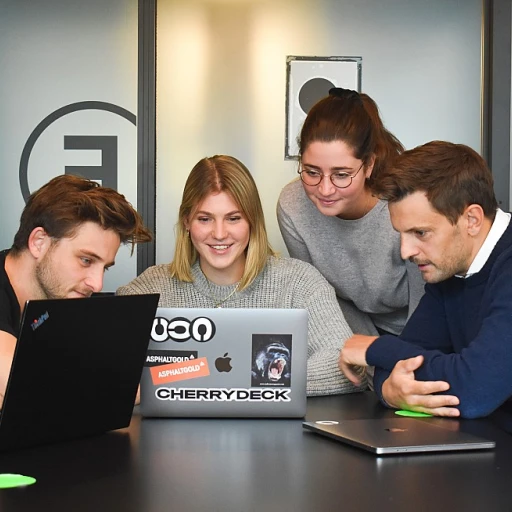
Understanding Generative AI in Workforce Training
The Power Behind AI-Driven Training
The advent of generative tools powered by artificial intelligence (AI) is reshaping how companies view and implement workforce training. These tools are designed to boost productivity by tailoring solutions specific to an organization’s needs, enabling teams to upskill rapidly and efficiently. Unlike traditional training methods that may be limited by resource constraints, generative AI eliminates barriers, enabling a broader scope for training employees. One of the key advantages of using generative tools in workforce development is their ability to create personalized learning experiences. As each employee has unique career aspirations and existing skills, these tools can generate content and tasks that align perfectly with an individual's training needs. This personalized development not only enhances skill acquisition but also increases engagement by allowing employees to directly see the impact on their work and career progression. Harnessing AI for skills training isn't just about convenience; it's about developing a generative workforce that’s equipped for the future of work. By implementing AI-driven training programs, organizations ensure their workforce is prepared for evolving industry demands. There's a potential for organizations to see a transformative shift in how skills are developed, leading to a workforce that is not only skilled but also more agile and capable of taking on future challenges. For more insights on how to maximize the return on investment of integrating tech skills courses, check out this link. This resource offers valuable best practices and case studies that exemplify successful AI-driven training strategies.The Role of Human Resources Communication
Enhancing Collaboration for Growth
In the evolving landscape of workforce development, the role of Human Resources communication is more crucial than ever. As organizations leverage generative tools and artificial intelligence to accelerate their training programs, HR must ensure clear and effective communication pathways within companies. Effective communication facilitates the adoption of new technologies and paves the way for seamless skills development among employees.
Organizations are seeing a shift where cross-functional teams collaborate on integrating AI tools to optimize workforce training. This collaboration requires HR to act as a bridge between technology and employees, helping employees understand the purpose of AI tools in boosting productivity and enhancing career growth. It’s about making complex tools help employees accomplish tasks more efficiently, thus fostering a culture of continuous learning.
The Role of HR Communication
- Building trust in technology solutions by providing transparency about development and deployment within the organization.
- Facilitating dialogue between subject matter experts and employees to make skills training more relevant and impactful.
- Ensuring that all communication is inclusive, allowing every member of the workforce to express concerns and ideas about generative AI tools.
Effective HR communication contributes significantly to a generative workforce, as it helps integrate AI into everyday work scenarios. By doing so, employees can see firsthand the benefits of generative skills and tools designed for enhancing their work life. These efforts build a resilient workforce ready to meet the challenges of the future work landscape.
For HR professionals seeking new strategies to amplify their communication approaches amidst technological advancements, exploring the benefits of a learning management system demo can provide valuable insights.
Challenges in Implementing AI in Training Programs
Overcoming Common Hurdles in AI-Driven Training Programs
Implementing artificial intelligence, especially generative AI, in workforce training presents unique challenges for companies and organizations. Understanding these obstacles is crucial for successful integration and development of generative tools designed to boost productivity and improve skills development. One of the major hurdles is the resistance from employees who may fear that AI will replace their roles. It's vital to foster an environment where AI is seen as a tool that assists in everyday tasks rather than a threat to job security. Encouraging a cross-functional team approach to skills training can help ease these concerns. Clear communication about how generative tools can enhance career prospects is essential. Data privacy and security pose another significant concern. Organizations need to ensure that employee information used in AI-driven training is protected and complies with regulatory standards. This requires implementing robust cybersecurity measures, ensuring peace of mind for all stakeholders involved. Additionally, companies must address the challenge of adapting existing training programs to accommodate new technology. This involves continually updating the training agenda and investing in upskilling the workforce to effectively use generative AI solutions. Often, this means collaborating with subject matter experts to identify the most efficient methods for integrating AI into existing structures. Furthermore, there's a need to maintain human resource communication as a cornerstone of the AI integration process. Enhancing leadership skills through management coaching can facilitate this, helping leaders communicate the benefits and implementations of AI within the organization. Despite these challenges, the benefits of incorporating AI into training initiatives are vast. By focusing on these areas and applying best practices, organizations can harness the potential of AI to reshape the future of work, boosting both individual and overall organizational performance.Enhancing Employee Engagement with AI
Fostering Employee Connectivity through AI
Enhancing employee engagement has always been a critical aspect of workforce development. With the rise of generative tools and artificial intelligence, organizations are reimagining ways to boost productivity and foster deeper connections among their teams. Here’s how generative solutions are being implemented to increase engagement and skills development:- Personalized Training Paths: Generative AI excels in analyzing data to create personalized training paths tailored to individual skills and career aspirations. These tools help employees see a clear path for development and growth, which is pivotal in maintaining motivation and enthusiasm for learning.
- Real-time Feedback: AI-powered platforms provide immediate feedback and support, akin to having subject matter experts readily available. This fosters a continuous learning environment where employees can refine skills as they progress through tasks and challenges.
- Cross-functional Collaboration: Generative tools facilitate better communication and collaboration within teams by breaking down information silos. Employees can work more efficiently across departments, leading to holistic solutions that benefit the organization.
- Engagement at Scale: AI makes it possible to engage employees at scale efficiently. It ensures no one's progress gets overlooked, thus supporting inclusivity and recognition within the organization.
- Gamification of Tasks: Incorporating gamified elements into training programs can increase engagement by making learning enjoyable and rewarding. Generative AI can design these elements to align with company goals and employee interests.












